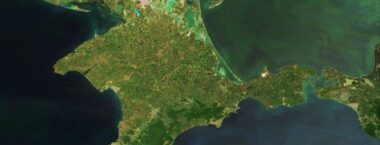
Action Plan for Implementing the Strategy for the Deoccupation and Reintegration of Crimea. What has changed?
On April 4, 2023, the Cabinet of Ministers of Ukraine (CMU) approved Order No. 288-r,...
03 May 2023
In late September 2016, the monitoring team under the project “Human Rights Passportisation of Areas” started to work. The project was devoted to the development of tools for evaluation of all administrative areas of Ukraine on the situation with human rights.
In September – November 2016, the representatives of the Office of the Ukrainian Parliament Commissioner for Human Rights and public monitors assess the actions of local governments, determine vulnerabilities, regional peculiarities and needs to create an overall picture of Ukrainian cities from the standpoint of human rights.
The project is implemented by the Ukrainian Helsinki Human Rights Union and the Office of the Ukrainian Parliament Commissioner for Human Rights.
This passportisation will not only identify issues but also prepare the methodology for monitoring human rights.
Olena Smirnova, Deputy Head of the Office of the Ukrainian Parliament Commissioner for Human Rights and a coordinator of the project “Human Rights Passportisation of Areas”:

“The issue of Passportisation of areas from the standpoint of human rights in any sphere of local governmence is an important element for monitoring human rights in different regions of the country in the context of reforming public administration with the emphasis on decentralization. This passportisation does not only identify issues but also prepares the methodology for monitoring human rights, for assessing the existing problems in the sphere of human rights and provides assistance to the Office of the Ukrainian Parliament Commissioner for Human Rights”.
Oleh Martynenko, the Head of the project “Human Rights Passportisation of Areas,” UHHRU:
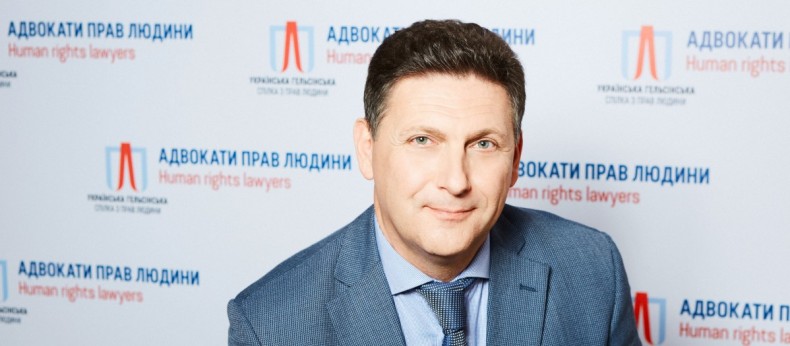
“In late 2015, the Office of the Ukrainian Parliament Commissioner for Human Rights began discussions about opening the offices of Ombudsman in the regions. In the result, more positions of regional representatives were created. At the same time, it was obvious that one representative of the Ombudsman on the whole region is not able to organize effective monitoring of the activities of authorities. Then, given the positive achievements of the model “Ombudsman +”, used in the development of the national preventive mechanism (prevention of torture and ill-treatment), experts of UHHRU and the Office of the Commissioner decided to test a system of joint monitoring visits. The result of these visits is not only the assessment of local governments but also the development of a mechanism that local communities could use. From the beginning, we spent some effort in order to structure our activities, to define the purpose, objectives, expected results and risks of future monitoring.
There was no doubt in need of such monitoring. Ukraine declared focus on decentralization. It provides for local governments significant powers to be balanced by the expansion of public control over the authorities. However, currently, such mechanisms are not enough, although, they certainly exist. But forms of social control are rather narrowly directed toward specific target groups and have great diversity on performance and results. The proposed approach is aimed at creating exactly the unified system of indicators. The civil society would have to measure the extent of human rights by local authorities. So the outcome would be two products – the mechanism of public evaluation of local governments and a system of indicators that objectively should reflect the quality of such activities. ”
Yurii Ksonzhek, a public monitor:
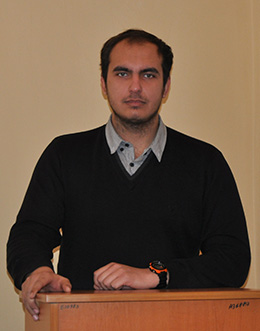
“The strength of public monitoring is impartiality of a monitor that is based primarily on the enthusiasm and desire to contribute to the formation of civil society. As a result, we have the clearest conclusions on the results of the monitoring. The main difficulty that the monitors faced was the closed nature of authorities regarding an open dialogue on their activities. The authorities were skeptical to the public monitoring in most cases, and some even refused communication justifying the lack of authority of the monitors. Also, it should be mentioned the need for deep knowledge of public monitors in the area of the work of the authority that is subject to monitoring. Currently, I think it is not sufficient enough. The outputs of this situation, of course, may be different, but now is not about that. ”
The proposed approach is aimed at creating exactly the unified system of indicators. The civil society would have to measure the extent of human rights by local authorities.
Andrii Halai, a coordinator of the project “Human Rights Passportisation of Areas”, UHHRU:
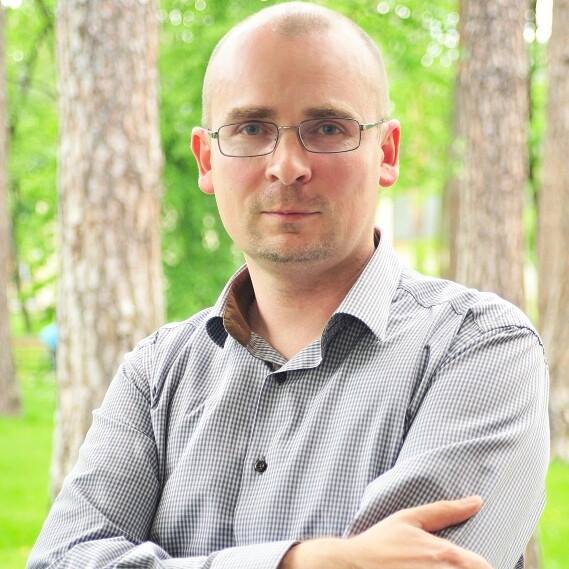
“It should be noted that direct monitoring is not the main purpose of the project. The main thing is, on the one hand, to develop monitoring tools on the criterion of effectiveness, feasibility, adequacy, and on the other hand, to develop the mechanism of interaction between the Office of the Ombudsman and civil society monitors during the monitoring. The project involves the need to elaborate monitoring system in essentially different administrative areas. Unfortunately, Ukraine has a lot to do in order to achieve positive assessment on human rights. Efficient systematic monitoring revealed typical and specific human rights problems, for example, in Chernivtsi Oblast. 90% of the monitoring tasks were carried out in Chernivtsi, in its institutions and organizations. Outside the city, the monitoring group took into account the place of captivity social purpose: inpatient wards for permanent or temporary residence in Storozhynetskyi and Zastavnivskyi regional and local social service centers. However, note that UHHRU, when organizing monitoring visits, differs from the similar practice of government inspections: each line was planned so that the monitors finished their tasks in an optimum time without spending additional resources to the project.
The work in every direction lasted two to four days, depending on the task. We add that before the departure, UHHRU directly contacts local public institutions, make a preliminary study of issues that need attention. This can be a study of regional media, communicating with activists, sending requests for public information. This work is not counted as part of the visit but sometimes lasts several weeks. If we see a violation, we do not leave it unnoticed. First, each area of monitoring team completes its work drafting the recommendations from the Office of the Ukrainian Parliament Commissioner for Human Rights to address identified deficiencies. Such a response is sent to authorities. The powers of the Ombudsman make the response as effective, and it cannot be ignored. Second, in the field (starting from the monitoring in Chernivtsi), we initiated mandatory immediate conclusions and provided recommendations to institutions that were included in the monitoring program. This allows communicating each finding of the monitoring group directly to the responsible officials. Third, in the case of systematic violations of human rights that is of public interest, we connect the Strategic Litigations Center of UHHRU. The lawyers of the Center provide assistance in the case in all possible jurisdictional institutions. Finally, we do not see the only way to improve the human rights situation on the ground by making public of the negative findings. Responsible officials, which are many in each area and its agencies, accept the recommendations of our monitors as their positive obligation to improve its organization of work, provide better services to local communities “.
Prepared by Tetiana Honcharuk
This project was made possible by the generous support of the American people through the US Agency for International Development (USAID) as a part of USAID’s Human rights in action programme and implemented by the Ukrainian Helsinki Human Rights Union.
The American people, through USAID, have provided economic and humanitarian assistance worldwide for nearly 50 years. In Ukraine, USAID provides assistance in areas such as economic development, democracy and governance, health and social sector. Since 1992, the US Agency for International Development has provided Ukraine with technical and humanitarian assistance worth 1.8 billion US dollars.
More information about USAID programs in Ukraine is available on the official website of USAID ukraine.usaid.govand Facebook facebook.com/USAIDUkraine.
The Project on Institutional Development of UHHRU with the financial support of the Government of Sweden through the Swedish Embassy in Ukraine. The views and interpretations presented in this publication do not necessarily reflect the views of the Government of Sweden.
With the support of the Government of Canada through Global Affairs Canada in the Human Rights above All Project, implemented by UHHRU. The views and interpretations presented in this publication do not necessarily reflect the views of the Government of Canada.
If you find an error on our site, please select the incorrect text and press ctrl-enter.

On April 4, 2023, the Cabinet of Ministers of Ukraine (CMU) approved Order No. 288-r,...
03 May 2023
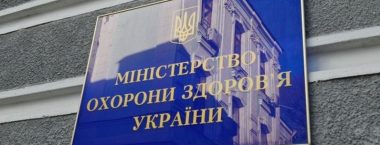
MoH order from 22.04.2019 No 933, registered in the Ministry of Justice of Ukraine on...
10 June 2019

This briefing paper was prepared by Ukrainian Helsinki Human Rights Union (UHHRU) and International Partnership...
24 January 2019

We would like to offer you the Digest of the Ukrainian Helsinki Human Rights Union,...
28 December 2018